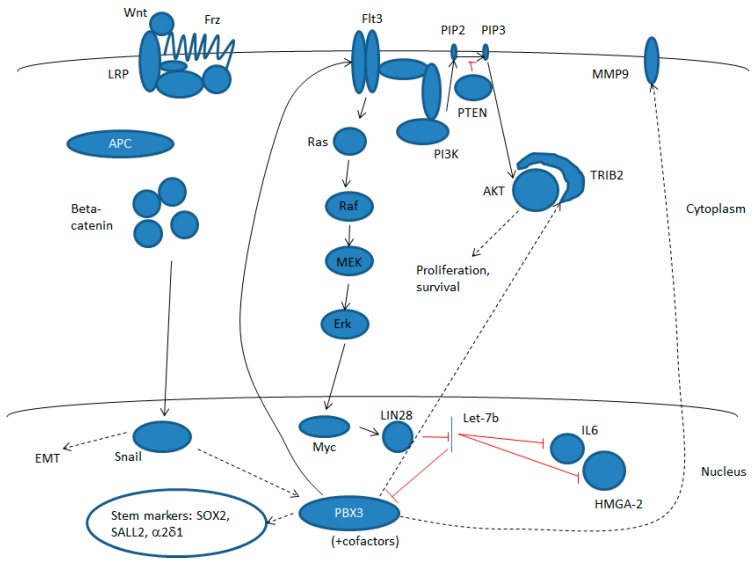Figure 1.
Pre-B cell leukemia (PBX3) is a target and a regulator of multiple signaling pathways. These include the MEK/ERK pathway, and notably tyrosine kinase receptor Flt3. Activation of this pathway represents a positive feedback loop in which increased expression of the Myc transcription factor activates LIN28 expression, which in turn inhibits biogenesis of miR-let-7b, an miR that blocks PBX3 expression post-transcriptionally. PBX3 also increases signaling through the AKT pathway by activating expression of the AKT activator protein, TRIP2. In addition, PBX3 expression increases in response to the signaling through the canonical WNT pathway via the activation of the Snail transcription factor. Activation of PBX3 through these pathways increases epithelial-to-mesenchymal transition (EMT) and hence invasion and metastasis (in part through increasing MMP9, IL6, and HMGA-2 expression) as well as cell survival and proliferation, and can also confer a TIC phenotype through upregulation of the SOX2 and SALL2 transcription factors and voltage-gated calcium channel α2δ1. Dashed lines represent indirect pathways involving multiple steps and additional components.

